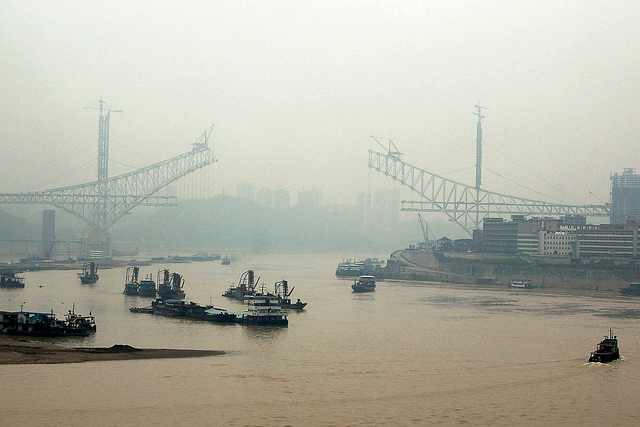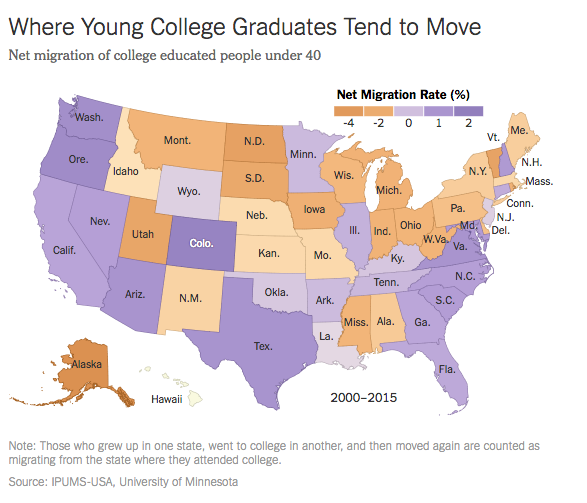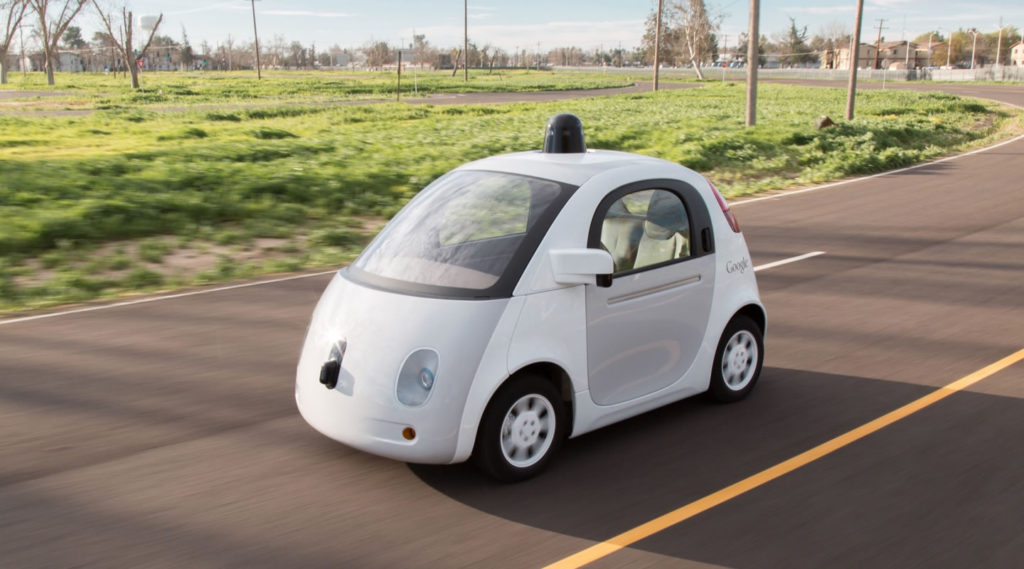What City Observatory did this week
1. The rise of global neighborhoods. A new paper published in Demography by Wenquan Zhang and John Logan traces out the changes in the racial and ethnic composition of US neighborhoods over the past three decades. Their chief finding: more and more American’s live in multi-ethnic “global neighborhoods”—places that have a significant representation of whites, African-Americans, Latinos and Asians. Between 1980 and 2010, the number of global neighborhoods in the US tripled, while the number of predominantly white neighborhoods fell by half. And strikingly, almost no minority neighborhoods ever transition to becoming predominantly white: of 3,762 minority census tracts in 1980, exactly 2 had become predominantly white by 2010.
2. Debating the Trump infrastructure plan. Washington is abuzz with talk of a potential Trump infrastructure initiative, which at first glance appears to have a potential for bi-partisan support. But even though the details of the plan are undecided (will it be a generous tax credit for private investment, or some version of Hillary Clinton’s infrastructure bank idea?) the battle lines are already being drawn. Is it a sign that the new administration will be pragmatic and technocratic, or is it a thinly veiled vehicle for cronyism? Opinions differ. We offer a quick tour of the horizon about what’s being said.

3. More evidence on how the migration of well-educated young adults is driving economic success. Two new studies released this week shed additional light on the role that location preferences of well-educated adults are playing in reshaping the economic landscape. Data published by the New York Times Upshot team looks at the net migration of under-40 college-educated adults, and finds them systematically moving out of rust-belt states in the upper Midwest, and toward southern and coastal locations. The Brookings Institution takes a somewhat longer term view and looks at the share of college-educated young adults in each metropolitan area who were born somewhere else. For the nation’s 100 largest metro areas, 59 percent of the college-educated were born in a different state (or in another country). In some metropolitan areas it’s even higher: more than 90 percent of the college educated in Las Vegas were born outside Nevada. Because talent is so mobile, building a great place that will retain them and attract others is an indispensable economic strategy.

Must Read
1. Torn apart by the Big Sort. A decade ago, colleague (and friend) Bill Bishop wrote “The Big Sort” documenting the growing division of America, not just along political lines, but by lifestyle, attitudes and beliefs. The trends he documented have continued unabated, and played out prominently in the general election. Today, Bishop’s data shows that 60 percent of American’s live in “landslide counties”—places where the winning candidate’s margin of victory was more than 20 percent points. While our political divisions are very close at the national level, with about 1.5 percent more persons voting for Hillary Clinton, they’re not at all close at the county level. This trend has been accelerating for decades. In 2012, about half of all voters lived in these landslide counties; in 1976 (another close election), if was only 26 percent in such counties. Also worth reading: Governing’s post-election interview with Bishop.
2. Pollyanna and the driverless cars. Much is being said and written about all the marvelous effects of the coming driverless car revolution: they’ll eliminate crashes and traffic deaths, transform parking lots into plowshares (or parks), and generally make life better for everyone. Attending two recent forums on the subject, Aaron Renn has overdosed on the uncritical thinking here, and offers a thoughtful reminder of why remaking our cities for driverless vehicles may not be the best idea. So far, the debate is dominated by self-interested car and tech companies on the one hand, and cities desperate not to be left behind on the other. There’s precious little room here for thinking about how we might avoid the kind of massive problems that we created when we tweaked our cities for cars a century ago. That didn’t turn out so well, largely because we utterly failed to think about the negative consequences this technology might have. Let’s not repeat that mistake.

New Knowledge
Do AirBNB listings affect house prices? In the housing sector, the rapid growth of the so-called sharing or peer-to-peer economy may affect affordability. By creating additional demand for housing (from non-residents), the existence of rental services like AirBNB creates the opportunity for those who who use housing primarily for short-term rentals to out-bid households who might using housing only as a personal residence. A new study from Williams College economists Stephen Sheppard and Andrew Udell looks at data on AirBNB listings and changes in home prices for the city of New York. Their preferred methodology suggests that a doubling of AirBNB listings in a neighborhood is associated with an increase of 6 to 11 percent in housing prices, all other things being equal. (Other metrics suggest that the increase might be as high as 18 to 31 percent). While the study strongly supports the view that AirBNB tends to drive up home prices, the authors argue that this isn’t entirely a bad thing, because it enables property owners to make fuller use of their property, and generates additional tax revenues for local governments.

